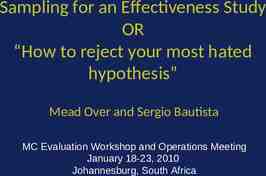SEEDS, Fruit
43 Slides6.79 MB

SEEDS, Fruit

Why are flowers so Successful? Have evolved mechanisms for dispersal of both pollen and seeds Pollen Dispersal: co-evolution of flowers that provide nectar which increases the probability of successful pollination Seed Dispersal: co-evolution of fruits covering seeds which increases distance of seed dispersal from the parent plant

Co-evolution p 476-481 Process by which two organisms evolve structures and behaviors in relation to or complementary to one another . Flowering plants evolved about the same times as mammals, birds, insects. Why do you think?

Ways to pollinate Wind Vectors: Eg: birds, animals, Insects (mostly bees)

Strategies for Wind Pollination How would you ensure your pollen gets to a flower if distributed by wind?

Strategies for Wind Pollination Shed vast amounts of pollen Pollen may be smaller, or have wings Anthers should be accessible by wind Effective capture – sticky, feathery No need to attract pollinators ( no showy petals, nectar)

c

Strategies for Vector Pollination Provide attractive scent, nectar, colour, shape to attract pollinators.

Coevolution. Strategies for Pollinators For Bees: Flowers provide landing platform and markings to point the way. Eg. Bees remember shape, colour, scent, location of flower. Communicate location to hive members.

Coevolution Moths: Release fragrance at night. Humming birds developed long beaks, ability to hover

Coevolution Flies lay eggs on rotting meat. Carrion flower developed scent of rotting meat to attract flies

Mimicry

Types of Pollination Self-pollination (on same flower) Cross-pollination (from one flower to another flower of another plant) Which is better? Advantages and Disadvantages.

Self-incompatibility Most angiosperms have mechanisms by which they avoid self-fertilization. Why?

Seeds After double fertilization, each ovule develops into a seed

Post Fertilization: Zygote Embryo Seed Parts of ovule toughen seed coat. Ovary wall thickens fruit Embryo develops inside seed

Advantage of Seeds Development of the seed is a major factor in the success of angiosperms on land. Seeds provide nourishment and protection for delicate embryos.

SEED (fertilized ovule) Contains embryo (2n), food source, seed coat: Gametophyte tissue becomes food storage Parental sporophyte tissue forms seed coat. Multicellular (in contrast to spore) Pine Life cycle: https://youtu.be/2gWEgrMwMe0

Parts of a Seed A) Stored food (gametophyte tissue B) Embryo C) Seed Coat – from parental sporophyte tissue

Cotyledons embryonic leaves Seeds have either one or two seed leaves: cotyledons Cotyledons contain stored food that is used when seed germinates (begins to grow). Monocts are plants that have one cotyledon. Eg. corn Dicots have two. Eg. beans first leaves to appear from a germinating seed.

Parts of a Seed Epicotyl – stem above cotyledons Hypocotyl – stem below cotyledons Radical – becomes the root Seed coat – protect from dryness, salt water, digestive enzymes.

Monocots still have Endosperm In many plants the endosperm (stored food) is almost completely used up by the time the seed is mature. In these seeds, the food used by the embryo during germination is stored in large cotyledons. In monocots there is still endosperm remaining in mature seed.

Germination, p541 When conditions are right, the seed will germinate (begin to grow). The seeds absorbs water, causing endosperm and cotyledons to swell, cracking open the seed coat. Radicle emerges and grows into the primary root.

Dormancy Embryo is alive but not actively growing. Allows seed to wait until environmental conditions are favorable to germination and growth

Ovary Fruit Unlike gymnosperms, the ovary containing the ovules in angiosperms develops into a fruit after fertilization. Why bother?

Why Bother? Advantage: The fruit gives the embryos the double benefit of: added protection against desiccation and increased dispersal, since it is eaten by far-ranging animals who then excrete the seeds do not have to compete with the parent for resources (light, water, nutrients, space).

Types of Seed Dispersal Wind Water Fur – hooks, sticky Humans/animals – yummy fruit Explosion https://www.youtube.com/watch?v OB0P3mx lxY

Seed Dispersal

Practice Seed Worksheet

Wind Wispy Wings

Fruits Water

Fruits Hitchhikers

Fruits Edible

Fruits Mechanical

DEVELOPMENT OF NEW SPOROPHYTE Seed mature on the scale. In favorable conditions, embryo inside seed will grow. By the time the food runs out, embryo has chlorophyll and can make its own. New tree (mature sporophyte). image

Parts of a Seed A plumule, made up of two embryonic leaves a terminal (apical) bud One or two cotyledons Store food that will be used by the germinating seedling. The hypocotyl and radicle grow into the part of the stem A pair of protective seed coats













